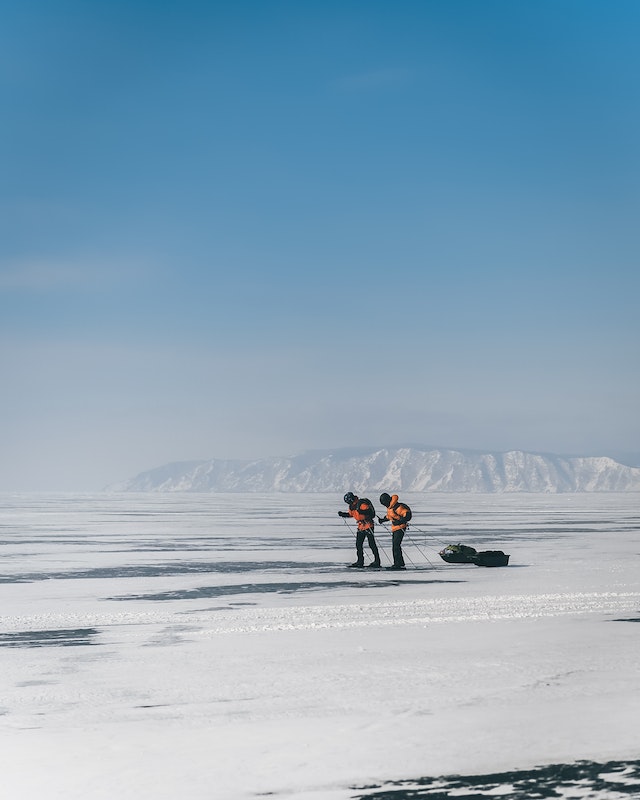
Who owns the North Pole and the South Pole? This is a surprisingly difficult question. Technically, no country owns either of them, although a lot of countries make claims. Canada, Denmark, Norway, Russia, and the USA have made claims on the North Pole. Argentina, Australia, Chile, France, New Zealand, Norway, and the United Kingdom all lay claim to parts of the South Pole.
It might sound strange, but the north and south poles are not actually at the northernmost point and the southernmost point of the Earth. We have assigned a top and a bottom to our planet. (Top and bottom being arbitrary. Sorry Australians.) We have marked the northernmost point as the North Pole and the southernmost point as the South Pole. However, physics doesn’t agree with us. The Earth has a magnetic field that is created by the spinning ball of molten iron at its core. This magnetic field saves us from the solar wind and allows us to go about our daily lives. It also has a north and a south, just like any magnet. However, these poles move and every 300,000 years they flip over. Currently, the magnetic North Pole is on Ellesmere Island in northern Canada, about 500 km from the North Pole. The magnetic South Pole is just off the east coast of Antarctica. Each magnetic pole moves between 10 and 40 km a year. If you stand on the North Pole, your compass will show north to be towards Ellesmere Island. Still, we need to know the top and the bottom of the planet so we can work out our longitudes and latitudes.
The North Pole was first reached by people in either 1908 or 1909. It is said that an American explorer called Robert E. Peary reached the pole in 1909. However, a recent investigation by the National Geographic has shown that he might not have actually reached it and Dr. Frederick A. Cook may have reached it a year earlier. Still, they were both Americans. The South Pole was first reached in 1911 by Roald Amundsen, a Norwegian explorer. He famously beat Robert Scott, who died on his journey back. Throughout history, most explorers who reached a new land claimed it for their country. This is how most European powers built an empire. However, this wasn’t done with the north and south poles.
Who owns the North Pole? The North Pole is situated in the Arctic and it is difficult to own land here because there isn’t any. The Arctic is almost entirely made of floating sea ice. There are some islands that come close and connect to the sea ice, but there are no islands under the ice. Submarines have actually sailed completely under the North Pole. The Arctic is governed by all of the eight countries that have coasts that border on the Arctic. These are Canada, Denmark (connected through Greenland, which it owns), Finland, Iceland, Norway, Russia, Sweden, and the USA (connected through Alaska). The whole of the Arctic, though, is technically international waters and the rules are the same as for any ocean.
However, despite it being international waters, a few countries have tried to claim the area as part of their own country because there are a huge amount of natural resources in the seabed underneath the Arctic. These countries are Canada, Denmark, Norway, Russia, and the USA. They have all sent claims to the UN saying that their countries don’t end at the sea, but continue along a continental shelf that spreads across most of the Arctic. So far, none of these claims have been ratified, but Russia has even gone so far as to plant its flag in the area in 2007. In international law, at the moment, no country owns the Arctic and the North Pole.
The South Pole is in the Antarctic and it is a different situation because it is a landmass that is larger than Europe. It is covered in ice that is 1.9 km thick, but that ice is currently melting. Countries want to own the Antarctic for the resources, in the same way they want to own the Arctic. Currently, it is not owned by any one country, but is governed by 54. After the South Pole was reached, a few countries started to claim territory there. These were Argentina, Australia, Chile, France, Great Britain, New Zealand, and Norway. They claimed the land through exploration or by being really close to the Arctic. Things came to a head in World War 2 when there was fighting in and around the Arctic. After the war, 12 nations came together and decided that the Arctic should be only used for scientific reasons. They signed the Antarctic Treaty in 1959. This treaty said that no country could own land in the Antarctic. Since then, 54 nations have signed up to the treaty. Countries would like to own it because of the potential natural resources, but while the treaty is standing, no nation can. And this is what I learned today.
Sources
https://blogs.loc.gov/maps/2021/09/reaching-the-south-pole-during-the-heroic-age-of-exploration
https://www.smithsonianmag.com/history/who-discovered-the-north-pole-116633746/
https://en.wikipedia.org/wiki/Territorial_claims_in_the_Arctic
https://gisgeography.com/magnetic-north-vs-geographic-true-pole/
https://en.wikipedia.org/wiki/Territorial_claims_in_Antarctica
https://www.antarctica.gov.au/about-antarctica/people-in-antarctica/who-owns-antarctica/
